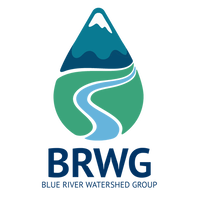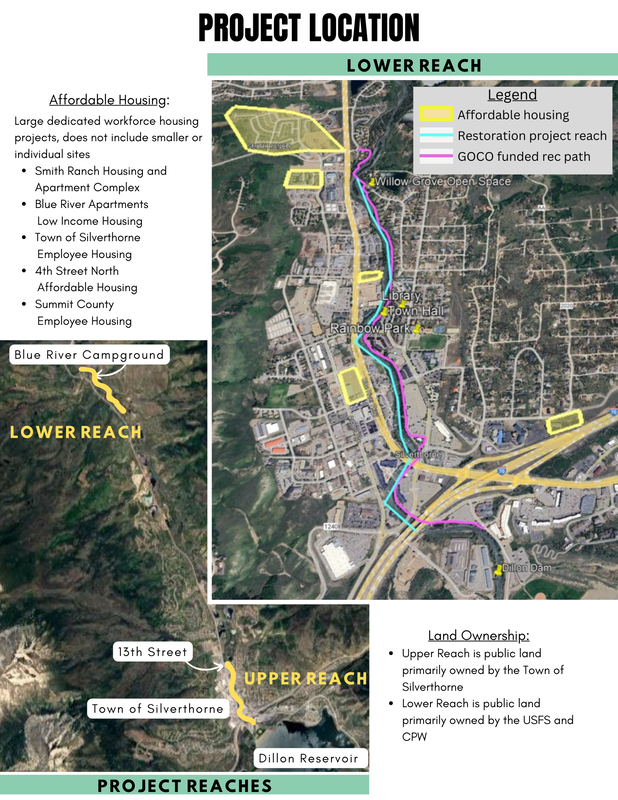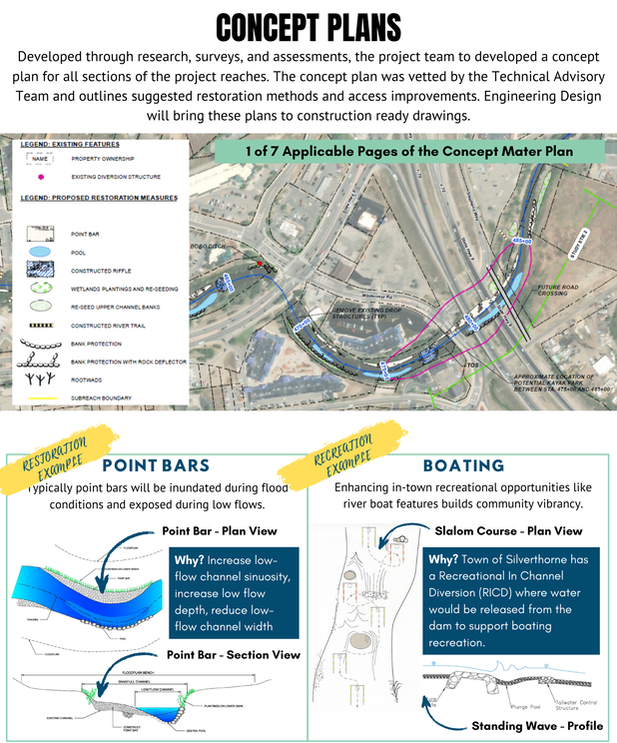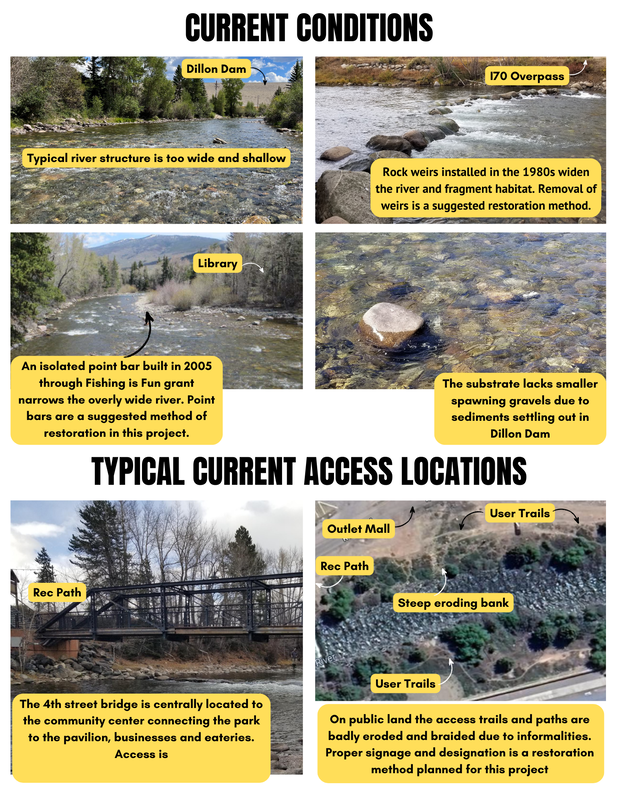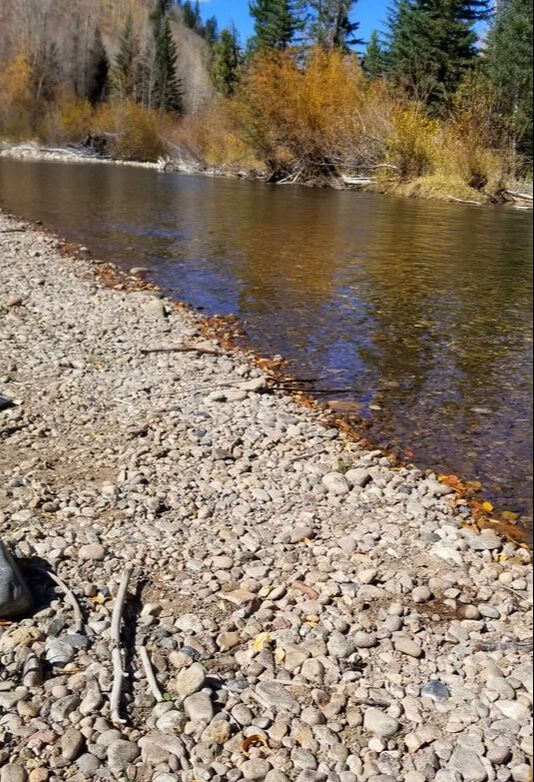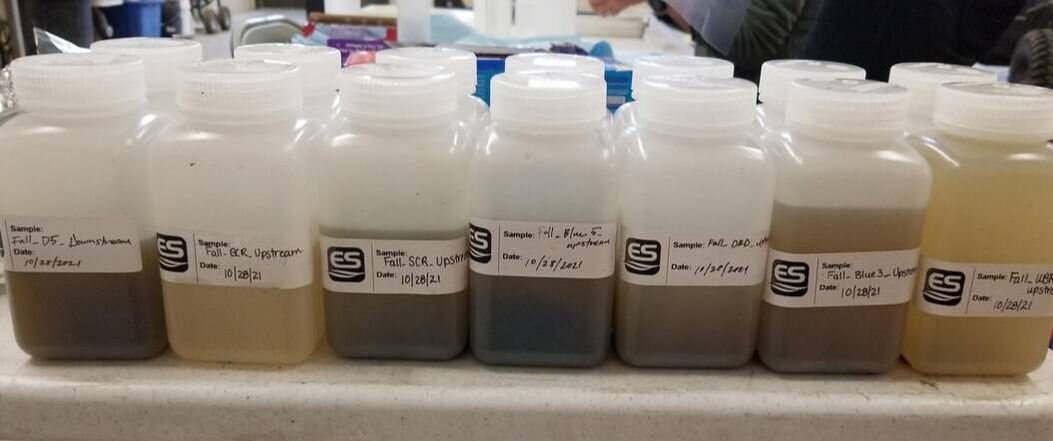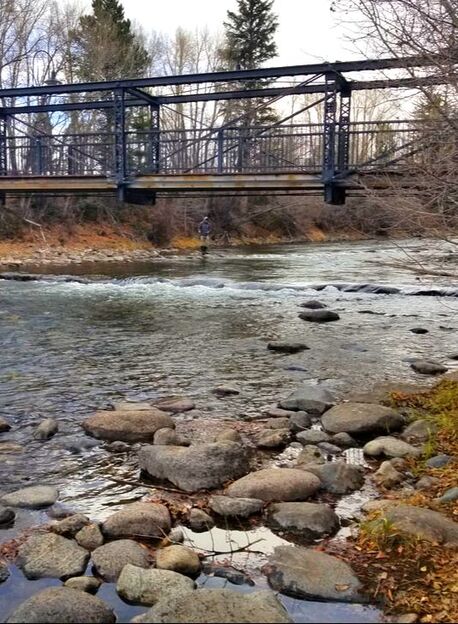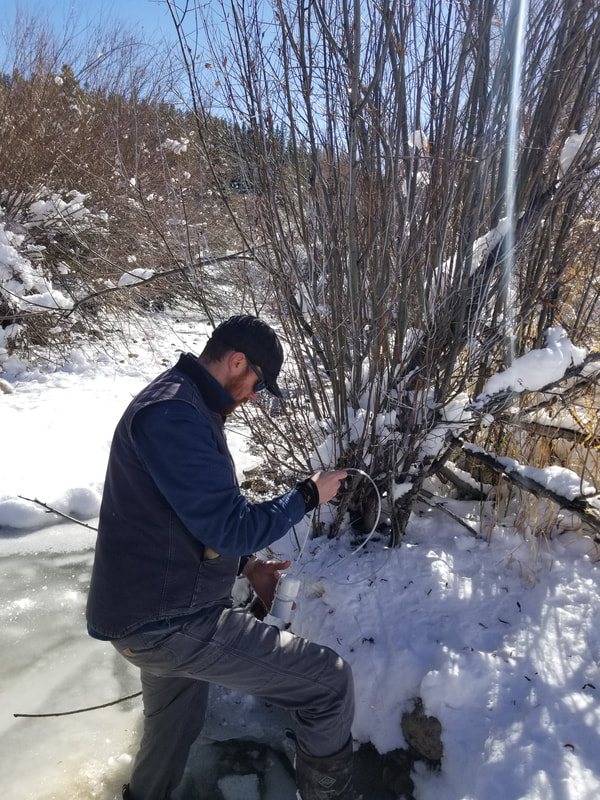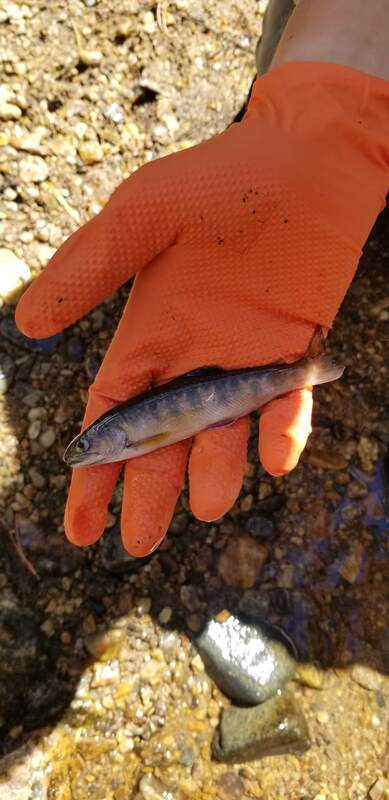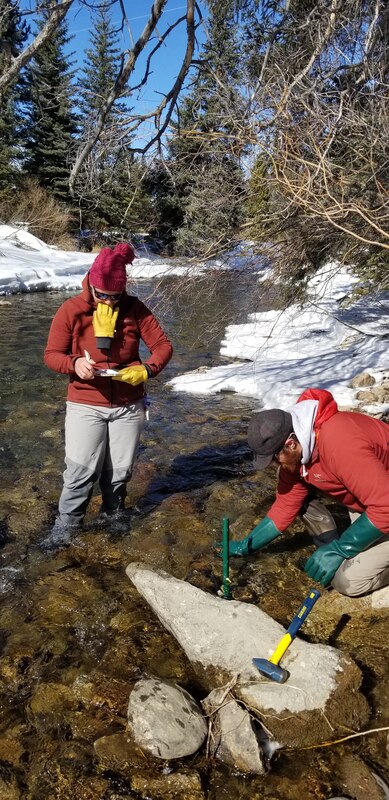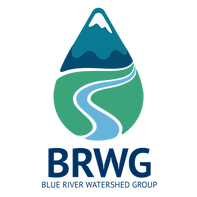|
UPDATED 7/09/24: REQUEST FOR PROPOSALS
Blue River Watershed Group is soliciting Proposals for Design Services for the Blue River Habitat Restoration Project on the Blue River in Summit County, Colorado. The overall goal for the project is to prepare construction-ready documents and prepare the sponsors to obtain funding, permits, clearances, and approvals for construction on three miles of the river. The work generally consists of channel restoration for the benefit of fish habitat, recreation, and public access. A mandatory pre bid meeting will be held on 15 July 2024, bids due 2pm MST 15 August 2024. |
Click Here to be directed to the bid documents, contact information, and RFP. |
Blue River Habitat Restoration Project
In 2016, Colorado Parks and Wildlife delisted 19 miles of the Blue River from its previous Gold Medal Water designation. The local community, natural resource managers, and environmental stakeholders were called to action to remedy the underlying causes to restore this important economic and environmental resource. The loss of Gold Medal status wasn't just symbolic, it pointed to greater threats that caused a significant decline in fishery and ecosystem health.
IWMP partners collected three consecutive years of data on water temperature, water chemistry, periphyton populations, aquatic invertebrate populations, and worked with the Town of Silverthorne on redesigning their stormwater system to reduce nonpoint pollution caused by salts, hydrocarbons, pesticides and fertilizers. These Habitat Assessments included environmental surveys, river cross section surveys, hydrologic and hydraulic analyses, and the development of recommendations focused on the improvement of habitat for the benefit of aquatic life.
The Blue River Habitat Restoration Project was created through this research and under the guidance of the Technical Advisory Team which includes Denver Water, Blue Valley Ranch, Trout Unlimited, USFS Dillon Ranger District, and Colorado Parks and Wildlife. The public responded with significant interest and support at the Blue River Habitat Restoration Project: Open House event in January 2024, displaying the communities continued interest in improving the Blue River for ecosystem services and recreational opportunities.
IWMP partners collected three consecutive years of data on water temperature, water chemistry, periphyton populations, aquatic invertebrate populations, and worked with the Town of Silverthorne on redesigning their stormwater system to reduce nonpoint pollution caused by salts, hydrocarbons, pesticides and fertilizers. These Habitat Assessments included environmental surveys, river cross section surveys, hydrologic and hydraulic analyses, and the development of recommendations focused on the improvement of habitat for the benefit of aquatic life.
The Blue River Habitat Restoration Project was created through this research and under the guidance of the Technical Advisory Team which includes Denver Water, Blue Valley Ranch, Trout Unlimited, USFS Dillon Ranger District, and Colorado Parks and Wildlife. The public responded with significant interest and support at the Blue River Habitat Restoration Project: Open House event in January 2024, displaying the communities continued interest in improving the Blue River for ecosystem services and recreational opportunities.
| briwmp_master_plan__final_w_app_august_2023.pdf | |
| File Size: | 46337 kb |
| File Type: | |
Through rigorous scientific studies, the IWMP has uncovered many of the root causes of the decline in the ecosystem in the project area of the Blue River. Several of these are listed below:
|
Historical and current human impacts: The watershed has been significantly impacted by activities such as mining, industrial and recreational use, and increased water demands. Direct human impacts are also a factor and pedestrian access, bank damage, and development along the river have contributed to localized erosion and degradation of habitat. Creating well designed public access points to protect riparian vegetation and provide adequate recreational opportunities for the public is a key project goal.
Transbasin diversions: A significant amount of water is diverted from the Blue River watershed to the front range, affecting the natural flow of the river. Reservoir operations and transbasin diversions also impact the timing of flows in the Blue River, affecting peak flows, base flows, and altering the seasonality of releases. Abnormal water temperature fluctuations: Water temperatures outside of normal ranges due to water releases from the bottom of the Dillon Reservoir have led to unnatural temperature regimes. Abnormally warm or cold water temperatures in the river can negatively impact biological processes of aquatic organisms, disrupting breeding cycles of animals such as mayflies, midges, and fish, as well as affecting the health and vitality of aquatic ecosystems. |
Channel morphology and habitat alterations: The construction of Dillon Dam, as well as increasing development along the riparian corridor, have led to changes in the channel structure, reducing bar/island braiding, large woody debris, and reducing deep pool habitat. A lack of an adequate variety of substrates, including spawning gravels, is also a concern for fish reproduction and health.
Water samples collected under the IWMP from the Blue River
The proposed solutions under the Blue River Habitat Restoration Project include the following:
Improving habitat quality and restoring main channel depth: The restoration plan aims to improve shallow channel depths, address overly wide channel sections, and habitat diversity by implementing measures such as bank stabilization, revegetation, and improvements for connectivity and fish passage. Narrowing and deepening the main channel by constructing cobble/point bars and deepening pools will improve channel morphology and increase habitat diversity.
Water quality improvements: The Town of Silverthorne Drainage Master Plan includes site-specific improvement projects to enhance stormwater quality at discharge points along the project reach. These improvements can be coordinated and incorporated with river restoration efforts. Temperature abnormalities have been partially addressed by Denver Water's commitment to augment temperatures from the top spillway (Glory Hole) when lake levels allow. This is a partial solution which helps address the unnatural temperatures in the Blue River, however a long term solution such as a permanent siphon to help correct for irregular water temperatures would be ideal.
Water quality improvements: The Town of Silverthorne Drainage Master Plan includes site-specific improvement projects to enhance stormwater quality at discharge points along the project reach. These improvements can be coordinated and incorporated with river restoration efforts. Temperature abnormalities have been partially addressed by Denver Water's commitment to augment temperatures from the top spillway (Glory Hole) when lake levels allow. This is a partial solution which helps address the unnatural temperatures in the Blue River, however a long term solution such as a permanent siphon to help correct for irregular water temperatures would be ideal.
|
Adding in-channel structures and enhancing pool depths: : Boulder clusters and large woody debris can be strategically placed within the channel to diversify habitat, sort and retain spawning gravels, and provide cover for aquatic organisms. Recommendations include enhancing existing pools and constructing new pools on outer banks to improve habitat conditions. Creating a multifunctional whitewater park which will serve to diversify habitat while providing enhanced recreational opportunities during peak flows.
Creating distinct and accessible recreation access points and increasing recreational opportunities: Measures such as constructing river trail access points, stabilizing trail surfaces with gravel, and adding steps along steeper bank sections can help reduce pedestrian impacts to the floodplain and protect riparian vegetation. The multi-functional whitewater park will also be part of the design plan and will provide both recreational opportunities for boaters and much needed deep-pool habitat and structure for aquatic life. |
Read more about the scope and details of the Blue River Habitat Restoration Project below:
Your browser does not support viewing this document. Click here to download the document.
Press Releases and Notable Mentions:
Summit Daily:
Federal agency awards $1.8 million grant aimed at getting the Blue River back to Gold Medal Fishing status
A tributary of the Colorado River, Summit County's Blue River has seen fisheries decline due to unnatural conditions associated with the Dillon Reservoir, which provides water to Denver
https://www.summitdaily.com/news/get-the-blue-back-to-gold-feds-award-1-8-million-grant-for-blue-river-habitat-restoration/
Dept. of the Interior:
Biden-Harris Administration Announces More Than $51 Million from the President’s Investing in America Agenda to Restore and Protect Rivers and Watersheds
Bipartisan Infrastructure Law to fund 18 projects in eight states that will improve aquatic habitats
https://www.doi.gov/pressreleases/biden-harris-administration-announces-more-51-million-presidents-investing-america
Coyote Gulch Blog:
The Department of Interior awards $1.8 million grant aimed at getting the #BlueRiver back to Gold Medal Fishing status — The Summit Daily #ColoradoRiver #COriver #aridification
https://coyotegulch.blog/2023/12/27/the-department-of-interior-awards-1-8-million-grant-aimed-at-getting-the-blueriver-back-to-gold-medal-fishing-status-the-summit-daily-coloradoriver-coriver-aridification/
